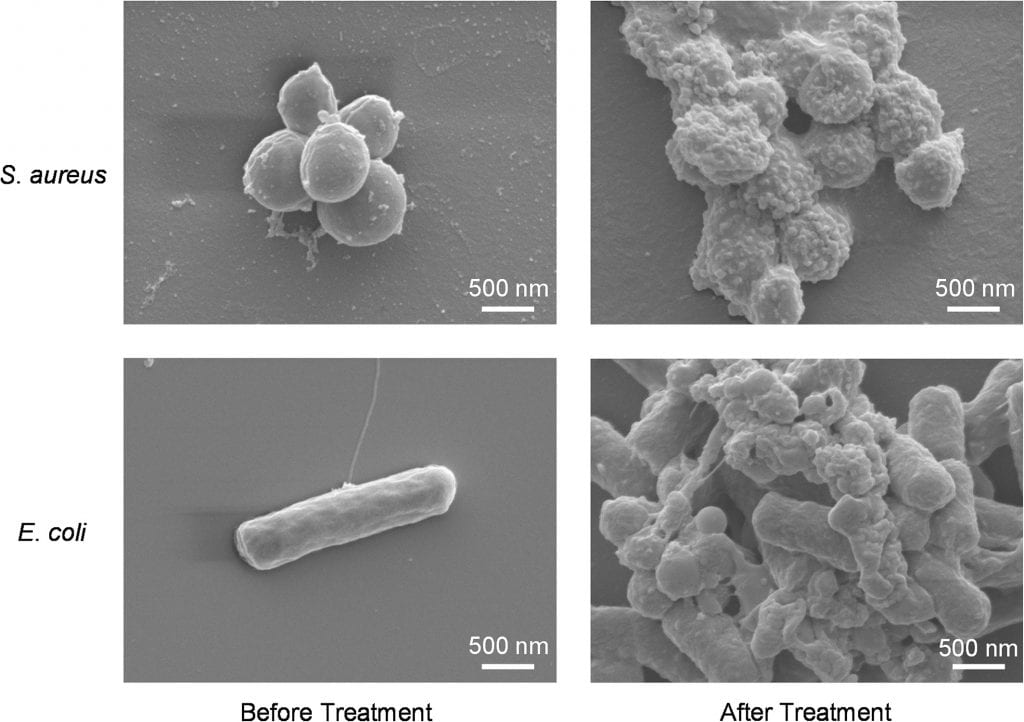While there are many beneficial relationships between humans and bacteria, there are also plenty of pathogenic bacteria that may cause serious infections. Antibiotics are most often used to combat these infections, but the overuse of antibiotics has resulted in antibiotic-resistant bacterial strains. Some natural host defense peptides can help slow the development of antibiotic resistance in bacteria, but it is highly complex and expensive to synthesize these peptides. An alternative to these host defense peptides is antimicrobial polymers, which mimic the structure and function of the peptides, but are more cost effective to synthesize.
Poly(N,N-dimethylaminophenylene methacrylamide) (PDMAPMA) has been proposed as a novel antimicrobial polymer. The antimicrobial behavior of PDMAPMA against E. coli and S. aureus shows broad biocidal activity against both bacteria.
PDMAPMA belongs to a well-known class of antimicrobial polymers, however its unique quaternary anilinium group structure has not been explored in detail before now. Specifically, the static and dynamic antimicrobial behavior of the polymer has been examined through minimum inhibitory/bactericidal concentrations and time-kill curves against the pathogens.

SEM images of bacteria before and after treatment with MeI‐PDMAPMA. The membranes became distorted after treatment with the polymer. Bacteria were also found clustered together after treatment.
The quaternized PDMAPMA inhibited the bacterial growth by exploiting the net negative charge of the bacterial cell membrane. Aniline, a base of the polymer used here, is highly hydrophobic in its neutral state, but becomes water soluble after quaternization. Conjugating the aniline with other groups to form quaternary anilinium groups on polymers such as PDMAPMA maintains the hydrophobicity of the polymer that is necessary for biocidal behavior.
The quaternized PDMAPMA was found to have broad biocidal activity against E. coli and S. aureus. The structure of the polymer and the charge density of the polymer films influenced the polymer’s ability to inhibit the bacterial growth by compromising the bacterial cell membranes, and a higher charge density of the PDMAPMA film resulted in a stronger biocidal effect against the bacteria. It has also been found that PDMAPMA is nontoxic to human red blood cells, but is mildly toxic to 3T3 fibroblast cells—a fact that will influence the usability of the polymer in humans.
Further studies could broaden the application of polymers with anilinium side groups, like PDMAPMA, in biomedical fields.

















